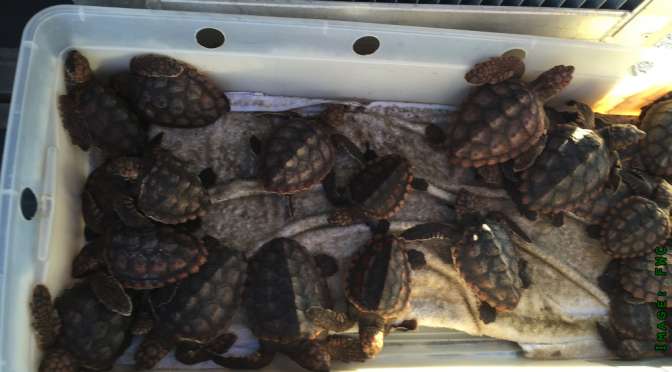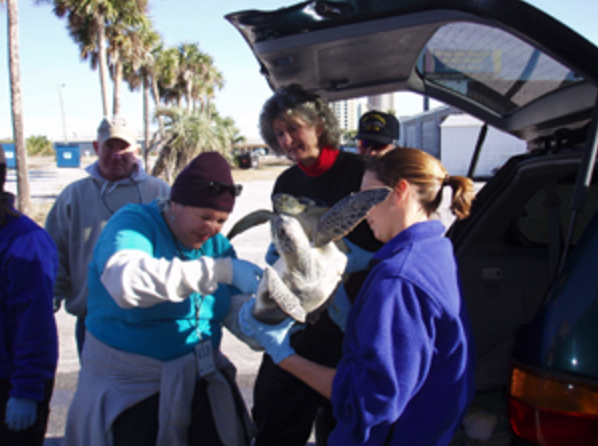A Sea Turtle is an air breathing reptile who lives and thrives in the Gulf of Mexico, not to mention the waters all over the world. The turtle is a large shelled creature who uses it’s shell as protection for its soft body. The shell is made up of many bones covered with horny scales, also known as scoots. They have no teeth, but very strong jaws. There are seven species of endangered sea turtles, the green turtle, hawksbill, leatherback, loggerhead, olive ridley, Kemp’s ridley, and flatback. The majority of these species of sea turtle are found in the waters off Florida. Only the olive ridley and flatback are not. Sea turtles grow very slowly, and live for decades.
If you’ve spent time on a boat in our local waters you have likely seen a turtle. The creatures are frequently seen roaming the grass flats foraging. You’ll see the smaller ones on the shallow grass flats. They are also found exploring the reefs offshore. Offshore you may see a large turtle head pop up out of the water, which can easily be confused for a crab trap buoy. There are many turtles swimming our waters.
During the summertime the sea turtles reproduce. During this process the females come ashore during the night. The turtles dig a nest in the sand to lay their eggs. They deposit as many as 100 ping-pong sized eggs into the sand. The turtle covers the eggs and returns to the ocean. After two months the eggs begin to hatch. The hatchlings then dig out of the nest. After emerging from under the sand, they follow the moonlight into the ocean. If you’re staying on the beach it’s important to turn off or dim your lights at night time primarily for this reason. After hatching, these incredible little creatures enter the warm gulf and swim away. Many of the hatchlings will grow to maturity and well into old age.
Recently there have been cold water temperatures in the Clearwater area. The waters have reached temperatures of 54 degrees. When the water drops to 54 degrees these reptiles are at a risk of being what has been termed cold stunned or even dying. Because these cold-blooded creatures take on the temperature of the water, extremely low temperatures can have adverse consequences for the sea turtles. The creatures depend on external sources of heat, sources like the sun to provide them warmth. A hypothermic reaction can occur when turtles are exposed to prolonged cold water temperatures. The turtles are rendered immobile by the cold. The symptoms of the impaired circulatory system include a decreased heart rate, decreased circulation, and lethargy. This is followed by shock, pneumonia, and an increased likelihood of death.
All the images in this article are thanks to the National Oceanic and Atmospheric Administration.

